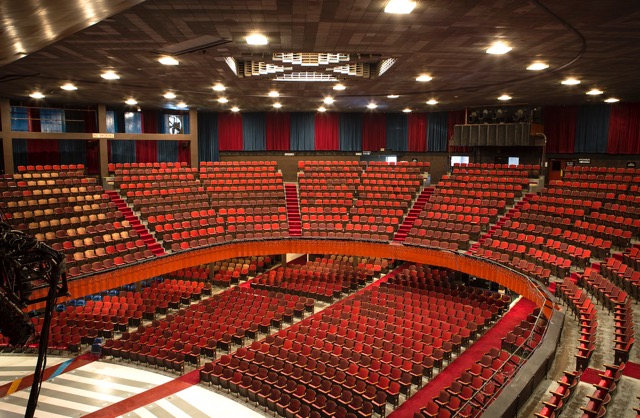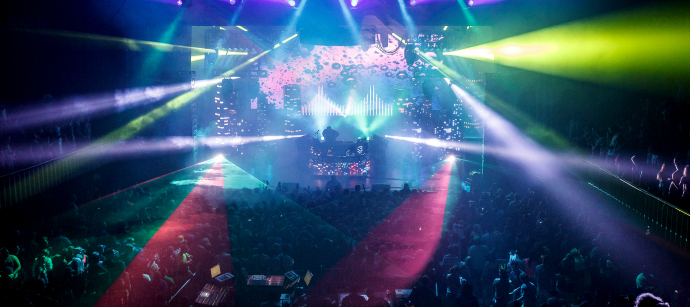






/https://d1pk12b7bb81je.cloudfront.net/images/photos/1487711599-21pilotsbrady.jpg)

Tulsa Theater Edition
Tulsa Theater

Opened: 1914
Originally constructed in 1914 as a convention hall, the Tulsa Theater is known as one of the most iconic, historic venues in Tulsa.
Although today the Tulsa Theater is synonymous with world-class acts in Oklahoma’s second largest city, this century-old structure has had a long and varied history. Known simply as Convention Hall for the first 40 years of its existence, the original building was created by a $125,000 bond issue approved by the City of Tulsa. Construction lasted approximately two years, and when the center opened in 1914 it was the largest hall between Houston and Kansas City.
Located at the intersection of West Brady Street and North Boulder Avenue, the Convention Hall underwent its first transformation in 1930. A dramatic 30-day redesign by Bruce Goff, a contemporary of Frank Lloyd Wright, took the building from a barn-like structure to a gorgeous example of Art Deco style. The redesign included white plaster and gold dividers, acoustic ceiling tiles, massive pendant light fixtures, gilded air conditioning covers, draperies and updated seating.
The Tulsa Theater is synonymous with world-class acts in Oklahoma’s second largest city.
The Convention Hall’s second major change came in 1952, when the four-story, red brick building was given additions to both the front and back, as well as upper and lower lobbies. It was also during this expansion that the building was renamed Tulsa Municipal Theater. In the mid-1970s, the building was renamed to the Brady Theater and listed on the National Register of Historic Places for its Western Classic Revival architecture. In the late 1970s, the Tulsa Performing Arts Center was built and the more modern structure took over the role of the city’s municipal auditorium. Around that time the City of Tulsa sold the building to Peter Mayo, who told the Tulsa World that the area around the theater “was all industrial and homeless. It had been abandoned by any entrepreneurs. The movers and shakers of the world had totally turned their backs on this neighborhood and this part of the world.” Although he originally named the structure The Old Lady on Brady, he simplified it to Brady Theater and gave it a complete renovation, which included enclosing the front entrance to make room for a concession stand and ticket office as well as adding a kitchen and storage space. Over the years, it has also been nicknamed "The Miracle on Brady Street" and the "Theater That Wouldn't Die.”
In January 2020, the venue's name officially changed to Tulsa Theater. In its current state, the building can seat up to 2,800 guests between two levels, and there is also an orchestra pit that can be raised to floor level. Over the years, plenty of famous folks have performed at the theater, including Will Rogers, Katherine Hepburn, Nat King Cole, Mae West, Louis Armstrong, Tony Bennett, Bette Midler and the great Italian tenor, Enrico Caruso, who performed one of his last shows at Tulsa Theater and has even been rumored to haunt the building. More recently, it has hosted everyone from Robert Plant to St. Vincent.
The theater that once was a likely candidate for razing is now a staple in Oklahoma's music community.
Situated in the Tulsa Arts District, the theater that once was a likely candidate for razing is now a staple in Oklahoma's music community. Within just a few blocks, visitors to this venue can find eclectic shopping opportunities, a vibrant arts district and some of the city’s best late night eats. The Tulsa Arts District is characterized by two-story brick warehouses and is known as one of Tulsa’s oldest areas. Now at over 100 years old, the Tulsa Theater may have changed in both appearance and name, but remains an integral part of the city's concert culture.









